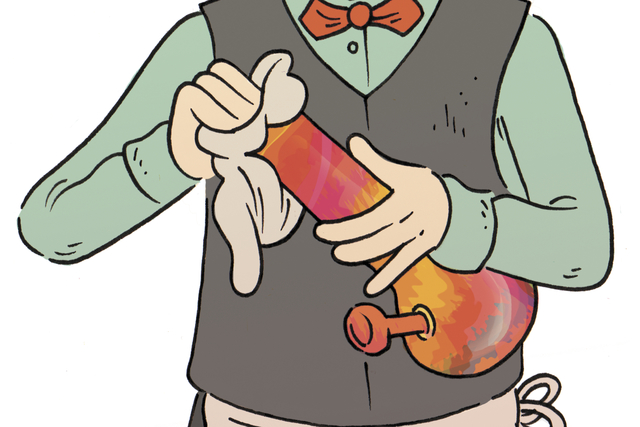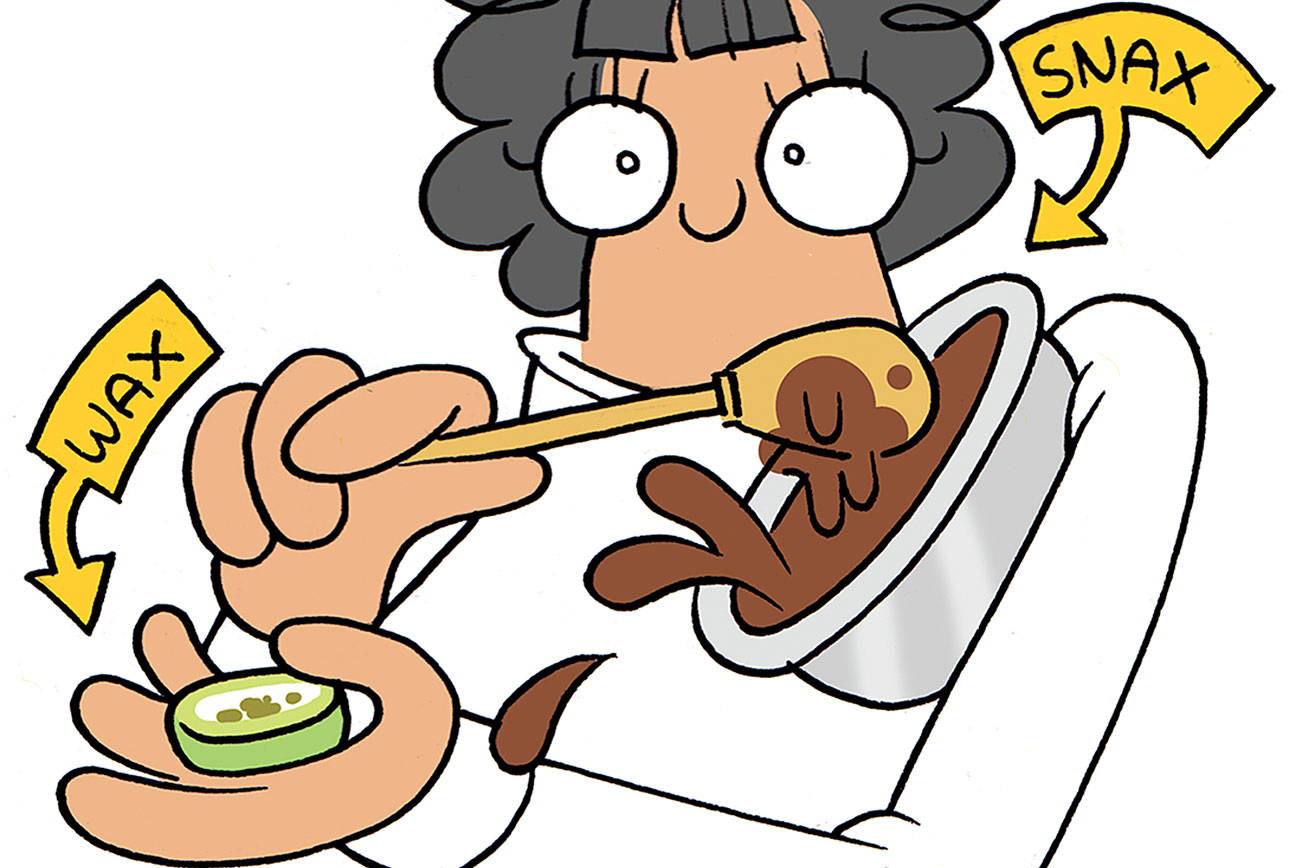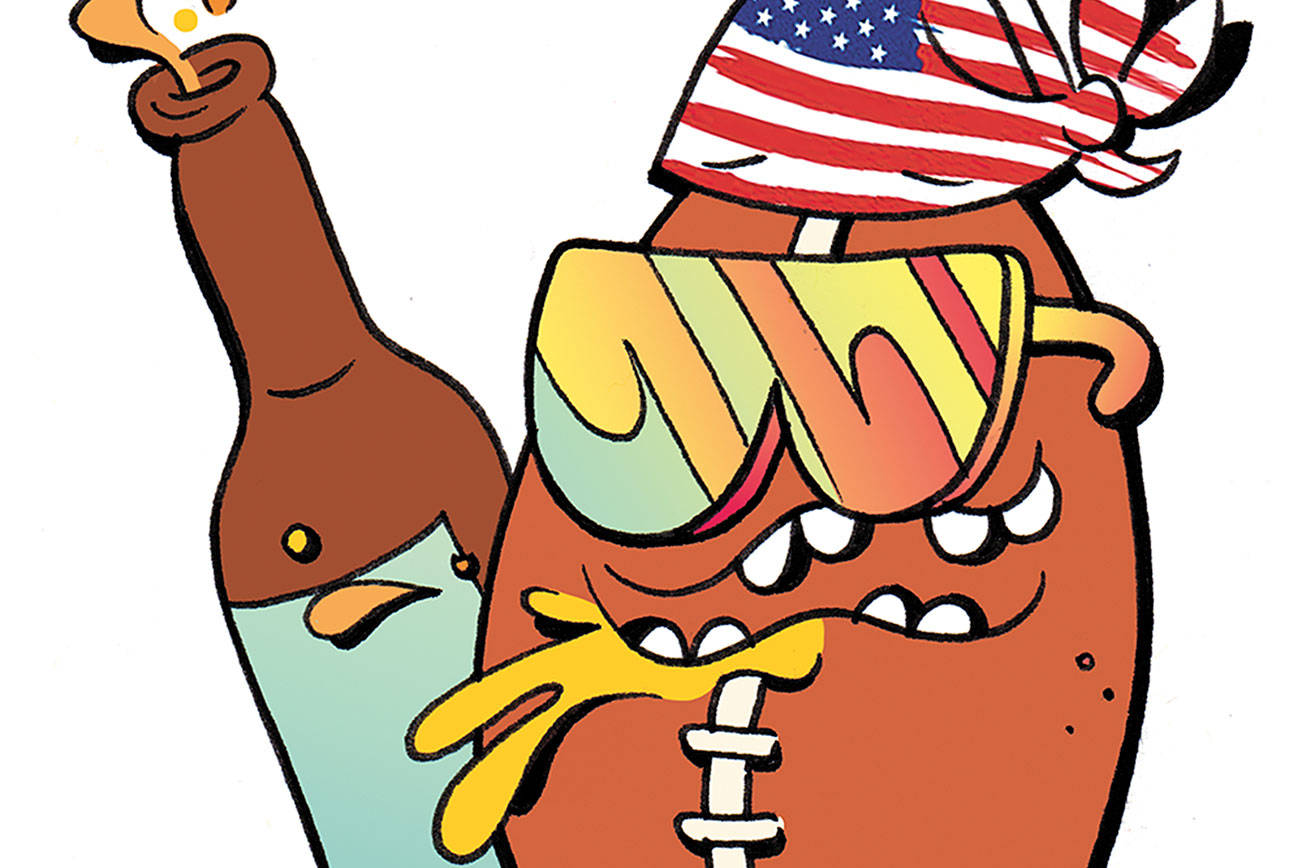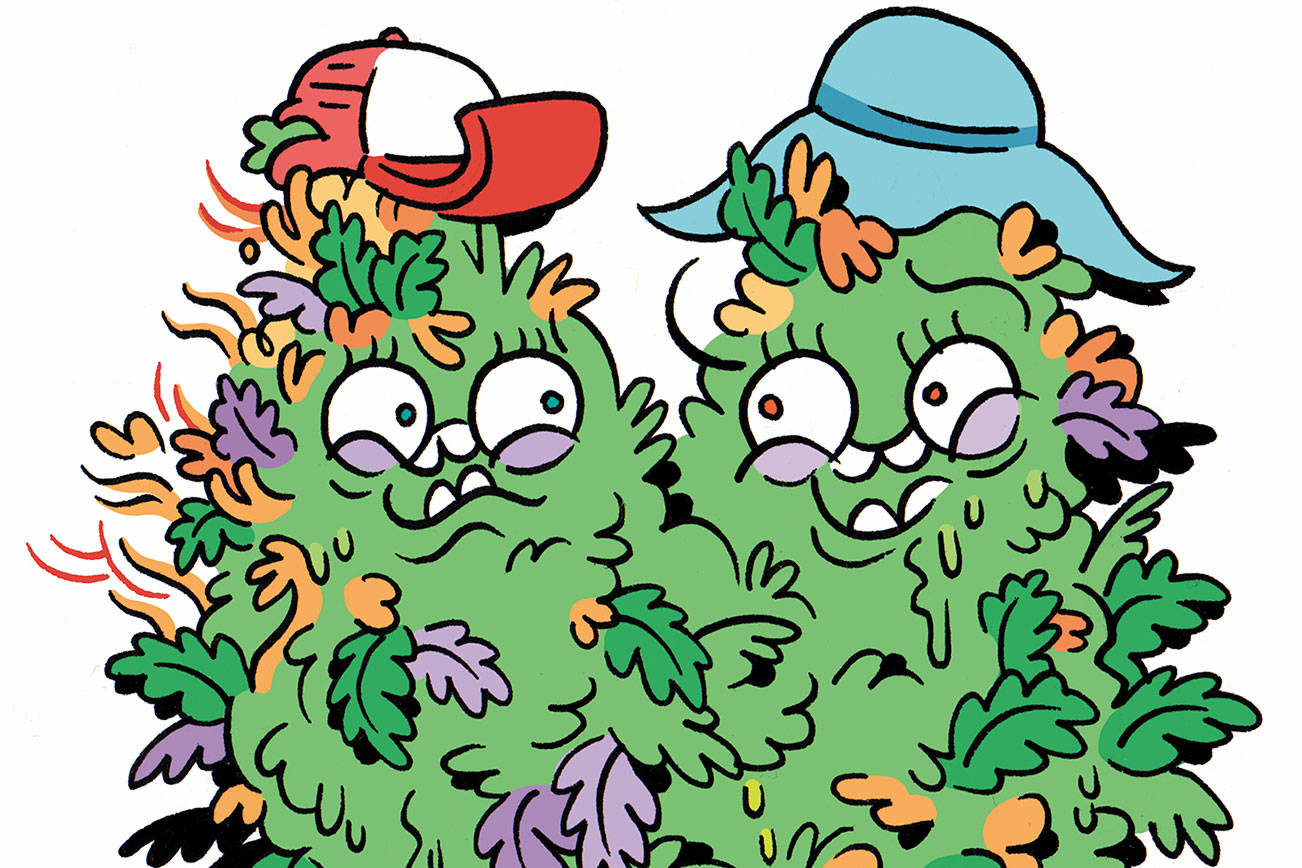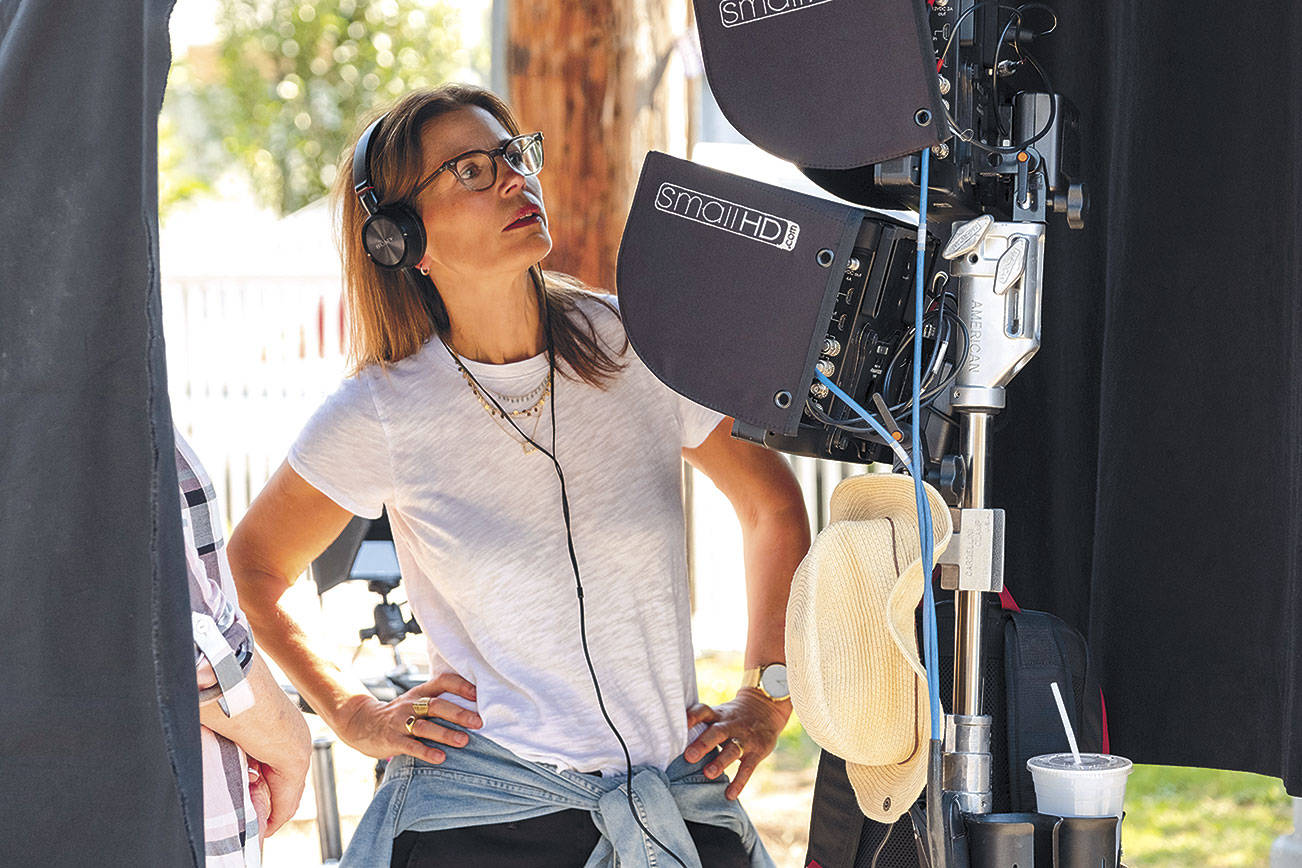Casey Woodruff has that seasoned bartender swagger: part entertainer, part salesman, part circus ringmaster. With sparkling blue eyes and an easy laugh, he skillfully moves a steady stream of customers through the cannabis shop where he works with bravado and style.
“Many of the same talents for people-handling cross over,” the budtender tells me, referring to his years in restaurant management and bartending. “You still gotta know how to figure out what people want, and then get it to them as fast as possible.”
There’s more than a little Vanna White in Woodruff’s presentation, as he gracefully chaperones several customers through their purchases of prerolled joints, wax, and edibles, fielding their questions and making suggestions from personal experience.
Along with Bill Eddy, he works behind the counter at the modest Ruckus space on Capitol Hill and, this afternoon, is fielding questions from me about the job.
On the counter sits a tip jar. It’s divided into two containers: “Trump” is written on one, “Herpes” on the other. The herpes side is stuffed to the brim. Do the two men miss the money they were making serving drinks and waiting tables? “Hell, no,” laughs Woodruff. “I love slangin’ dope! And people treat us great. And of course not having the customers consume on the premises means we don’t have to deal with their behavior, an added bonus.”
Eddy is the purchasing director at Ruckus. He is low-key and genial. When I ask him to elaborate on the pros and cons of budtending, he states simply, “It’s still retail,” and shrugs his sloped shoulders. “It’s not that far removed.”
He hands a customer a printed menu, pointing out the shop’s specials, carefully detailing the differences among several growers. The customers look on, clearly surprised by his product knowledge. He doesn’t seem to notice. Years of food-service jobs on the East Coast have left him a little burnt-out on humans in general. “But people out here [on the West Coast] are pretty cool,” Eddy continues as the customers ponder their choices. “Waiting tables, I’ve had people throw stuff at me and scream like maniacs, really lose it. The bud industry is much nicer.”
So what about medical patients? With medical-cannabis access constantly in flux, one issue patients are facing is the potential loss of several favored strains. Medicinal consumers are often looking for cannabis products high in CBD, a compound in weed known for controlling pain and nausea. But it doesn’t get you “high” in the same way as its more famous cousin, THC, making those strains traditionally less popular with the average consumer.
Woodruff responds: “I see the market responding in the opposite way. Instead of most stores shutting out medical patients, we’re all getting the chance to expand our personal knowledge, introduce everyone else to these really great high-CBD strains and products, and share the opinions of other customers. Obviously none of us have the medical training that the doctors do, so we can’t give any advice. Patients still have to somehow know what they need.”
Then the after-work crowd begins to roll in, and soon the line is practically out the door. I watch the two men cruise through sale after sale, and as I head out I think to myself, “Maybe I could do that.”
